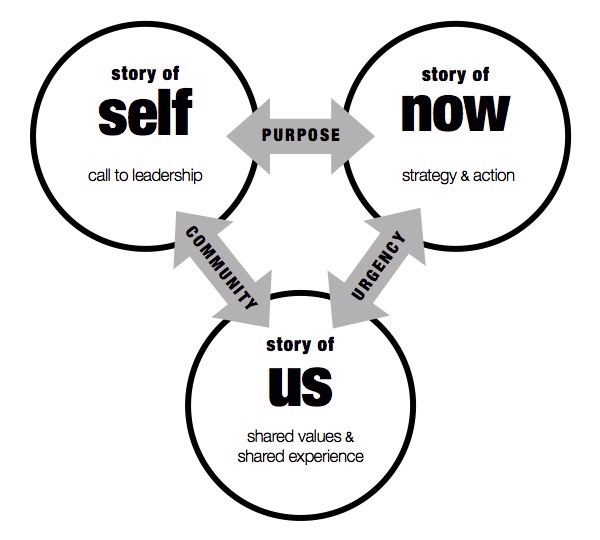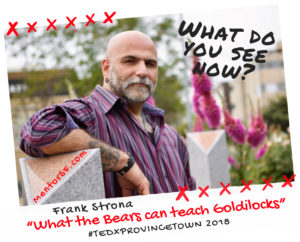When shit happens; your confidence gets beat up or maybe you’ve made a decision that wasn’t the most successful. Give it it ‘smoment, let it simmer & bubble as it will. Don’t add to the drama. Then assess it ; determine what you could have done differently and ake responsibility to address how tolearn from it for tomorrow.
Most leadership teams are not teams at all
Posted July 18, 2015 By Frank StronaFound this this morning and felt it rang true on so many levels. After watching an 24 month change process here in San Francisco – and the many challenges in language, style, trust and understanding – the core foundation of the change team, I believe is what not only set this back, but delayed early buy-in. A true understanding that Number 6 address is crucial – “Shared” is not the same as puppet head leadership
via: http://www.greatleadershipbydan.com/2015/07/six-things-great-leadership-teams-do.html
Six Things Great Leadership Teams Do
Guest post from regular contributor S. Chris Edmonds:
When I consult with executives on crafting a high performance, values-aligned culture, one of the first things I do is to examine the effectiveness of their leadership team.
Whatever that team is called – an executive team, a leadership team, a management team, etc. – that core team must model, reinforce, coach, and drive their desired culture. They must act with one mind, one heart, and one voice to create an engaging, productive work environment.
Most leadership teams I observe are not teams at all. Most are groups whose members focus on their functional team’s needs, not the organization’s needs! Members of the leadership group battle their peers daily for limited funds, resources, and people, day in and day out.
That’s no way to create a high performing, values-aligned organization.
Over my 25 years of coaching executives and leadership teams, I’ve found six consistent things that effective, inspiring leadership teams do. They include:
- Purpose
Do leadership team members move beyond their functional duties and embrace leadership team membership as a separate and equally important role? Do they act as committed, responsive members of the executive team to present a united voice on how the organization operates, not just how it performs? Do they willingly engage with their team peers in strategic discussions and plan how to inspire aligned behavior across the company’s leaders and associates?
- Engagement
Do they set aside their functional activities so they are fully present for their leadership team conversations? Do they inform their staff that they are not to be interrupted during the team meetings with functional activities and issues? Do they set aside their smartphones, tablets, laptops, and spreadsheets and focus fully on the discussion “in the moment”?
- Validation
Do they validate peers’ ideas, efforts, and accomplishments frequently? Do they pay attention to the nuances of the discussions – and dig deeper when a potential issue is raised? Do they ask everyone to participate so quieter members are given the floor to provide their comments, insights, or questions?
- Shared Leadership
Who facilitates the team’s discussions? Who drives for decisions to be made? If all members are comfortable doing that, it’s a clear indication of trust, respect, and validation.
- Consensus
Do discussions end with members proactively summarizing options, making recommendations, and end with a clear, mutual, firm decision or action being made? If consensus is not being reached, do all members engage in the discussion to reach consensus quickly?
- Aligned Action
Is there clear agreement by everyone on what the decision is and what that decision will require of team members? Do members volunteer to take responsibility? Do members challenge each other to greater targets and challenge each other when a member doesn’t do what they said they would do?
When leadership teams demonstrate these approaches consistently, the team is able to gather relevant data, decide confidently, communicate effectively, and hold each other accountable for team responsibilities.
Only when a leadership team acts with one mind, one heart, and one voice will they effectively inspire their organization to top performance, cooperative interaction, and inspired service.
How well does your leadership team model these factors? Add your thoughts in the comments section below.
- Chris Edmondsis a sought-after speaker, author, and executive consultant. He’s the CEO of The Purposeful Culture Group. After a 15-year career leading and managing teams, Chris began his consulting company in 1990. Since 1995, Chris has also served as a senior consultant with The Ken Blanchard Companies. He is the author or co-author of seven books, including Amazon best sellers The Culture Engineand Leading At A Higher Level with Ken Blanchard. His blog posts, podcasts, assessments, research, and videos can be found at http://drivingresultsthroughculture.com.
Lessons on looking back
Posted May 24, 2015 By Frank StronaWhen is your moment today?
The Art of Stillness: Adventures in Going Nowhere (TED Books) http://www.amazon.com/dp/1476784728/ref=cm_sw_r_tw_awdm_VcDyvb0K0S8Z3
Before you can “walk in someone elses shoes”…
Posted May 21, 2015 By Frank StronaOwn how yours aren’t fitting. Then take one big, solid step out of your comfort zone.
Luck is how you make the best of the choices you create
Posted April 30, 2015 By Frank Strona
Never underestimate the power of resilience. No matter how far down you feel beaten; it only takes a step to begin the journey again.

Start with 12 to ignite you change.
Posted April 27, 2015 By Frank Strona
While I don’t think these would all make my top 12, they do offer some great as food for thought.
12 Choices to Step Back From Burnout @edutopia

Your life in media..
Posted April 22, 2015 By Frank StronaMaking the rounds this week;
The Evolution of Your Professional Self on Social Media

7 Habits vs Realities of Happy Employees
Posted April 8, 2015 By Frank StronaRecently was shared this story; Happy employees share certain habits and behaviors, and these habits help them stay happy. Here are some of the most important ones.
Of which I am about 80% on board with. What I felt was missing was the “under-actions” that often accompany this type of commentary for the real time person; for the full article visit: http://www.inc.com/jayson-demers/7-habits-of-happy-employees.html
1. They see problems as opportunities.
But this also means that when they propose solutions –a process is in place in the workforce that allows for them to have fair and access to expressing theme for serious consideration.
2. They express gratitude.
Gratitude is one thing – but even the more gracious and appreciative worker will lose it if they feel locked or forced into a corner without the tools to adapt and move towards the “gratitude light’
3. They stay busy, but not overwhelmed.
Busy? The new norm – You have to know the difference between them and have the support in place to be mentored on how to use this skill.
4. They socialize.
This is the current buzz word in HR and Workforce development – This push to query “do you have friends at work”, how social etc.. It has value I agree. But it needs to be nurtured in an organic way. Not everyone wants or comes to work fitting in.
5. They take breaks.
I agree with this – enough said
6. They stay honest.
Honesty is over rated if it means you loose out becouse of institutional disreagurd for honesty and feedback. More and more “change leaders” use the jargon and don’t get the application. This is usually clearly shown in how they purposely never survey the workforce for honestly, confidence on themselves, etc. Instead push it on the systems they forced on the teams.
7. They accept what can’t be changed. Some things are simply beyond your control. You can’t help the demanding client who needs everything done by yesterday. You can’t help the fact that your boss rarely gives you the full plan in advance. Unhappy people see these things and dwell on them perpetually, constantly trying to fix them or staying angry that they exist. Happy people, on the other hand, learn to live with the idiosyncrasies of others, accepting that quirks and personality traits can’t always be changed–and that’s not always a bad thing.
Live and let live is a great approach – But to do this – you have to feel good about your place in the structure of work; how you see your role in the moment and its relation to yourself. So – before you can accept what can’t be changed – an honest assessment and query to yourself; that includes an understanding of “what I can change is my ability to leave what isn’t feeding my needs or skills” needs to happen.
The 3M+DI’s of Social Media
Posted April 1, 2015 By Frank Strona
Nice simple article that really looks said some of the better reminders for social marketing.
I’m not a big advocate for number four; Monetize. I do understand the value of developing social marketing techniques that bring in income- if that’s what you’re aim is. So this might be 3M’s +DI; for me with my fourth bullet being dissemination information.

Social-media marketing used to be a two-step process: write and post. But today it has evolved into something that sometimes looks more like a NASA mission-control center operation. Dozens of software systems and screens monitoring, measuring and optimizing each campaign.
But beneath all the complexities, the fundamentals of social-media marketing ultimately determine the outcome of campaigns. When marketers master the four Ms of social marketing, all the complexity amid a sea of tools and tactics can be distilled into a simple, successful game plan.
1. Monitor.
Social media is an increasingly crowded and busy arena. The downside is that manually monitoring social-media efforts is time-consuming, if not impossible. But the upside is that when a company uses a platform that can track and analyze social media chatter, it can tap into real-time intelligence about an industry and its competitors that will sharpen its strategy.
Monitor activity before you launch a campaign. Obtain a clear idea of a competitor’s strengths and weaknesses on social media. Look for market opportunities and see what consumers react to within the industry. Make social media your real-time A/B testing and market-research laboratory. And then monitor campaigns to optimize performance.
2. Manage.
Once a campaign is launched in the social sphere, management can make or break the campaign’s success. Refine your campaign by tracking performance and reacting to what works and what does not. Take the workload off your social-media manager by letting him or her schedule posts and tweets. Add a new level of social-media intelligence by listening to what users are saying about the company’s campaigns and brand.
Management is the execution of the social strategy. And with all the emphasis on the software, analytics and strategy, execution is still what drives the success of a social-media campaign.
3. Measure.
Measurement is increasingly important on two fronts. Social media is fragmented across multiple platforms. Tracking and analyzing the full scope of social-media use is now more difficult than ever. Secondly, measurement is one of the most important ways to demonstrate the effectiveness of social marketing to chief marketing officerss, company executives and board members.
Measurement involves tracking results on earned, owned and paid media. Engagement can be gauged across all social-media platforms and how traffic is driven to a company’s website. It’s also possible to analyze how paid advertising on Twitter and Facebook encourages participation on social-media campaigns and a company’s website.
4. Monetize.
The Holy Grail of social media marketing is sales. When marketers can draw a direct line between a social-media campaign and sales, all the guessing over the value of engagement ends. The return on investment is indisputable.
A rapid advance in technology is making social-media sales increasingly within reach of businesses of all sizes. Transactions can be made through use of a hashtag. Facebook is launching a “Buy” button that lets users purchase items without leaving its platform. And new social-commerce capabilities empower marketers to drive sales on social media.
Closing a sale can be tricky on social media. Consumers often seek an incentive, a prize or promotion. They also look for what their friends and acquaintances are wearing or purchasing. Such habits let brands leverage the viral, sharing nature of social media to inspire purchasing decisions with user-generated content or through coupons, discounts or prizes.
Public Narratives
Posted March 18, 2015 By Frank Strona








